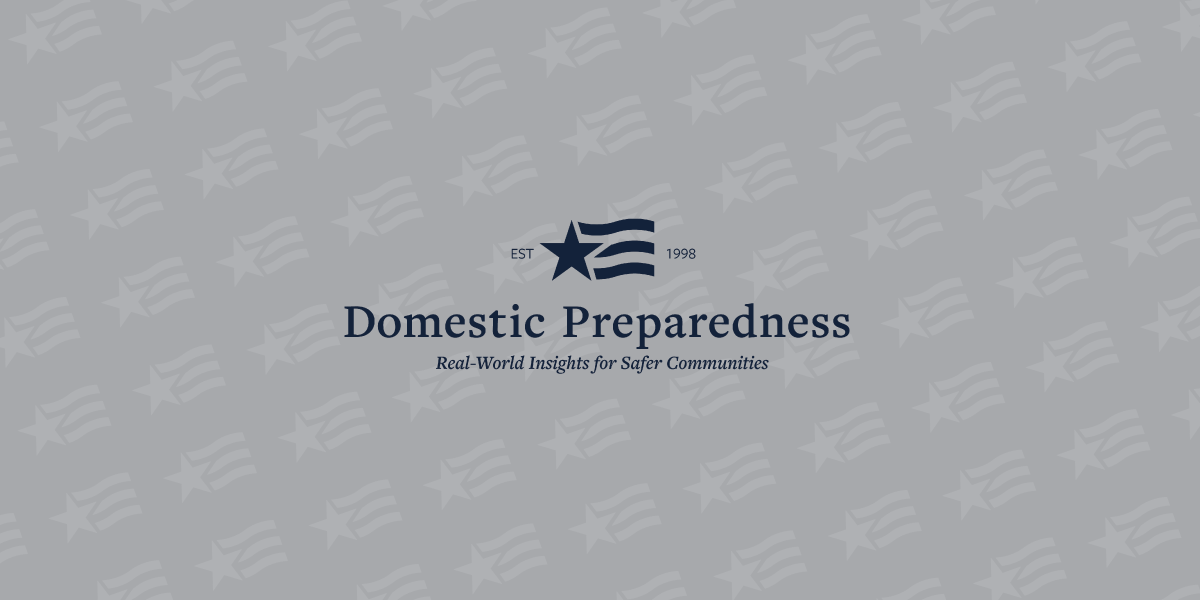It is an exciting time to be an emergency manager, with opportunities to support the profession in moving to the next level.
In that regard, Dr. Cortez Lawrence, the superintendent of the Emergency Management Institute (EMI – a branch of the Federal Emergency Management Agency, or FEMA) asked Dr. Wayne Blanchard, the director of FEMA’s Higher Education Program, to convene a group of eight or so professional emergency managers from state and local jurisdictions, as well as from the private sector and institutions of higher education, to discuss the principles of emergency management (EM) in general – and, during that discussion, to develop: (1) a workable definition of emergency management; and (2) comprehensive, credible, but also forward-looking “vision” and “mission” statements that the EM community and the U.S. public would understand and support.
The process is an ongoing one, and the latest session has been underway this week – the anniversary of the 11 September 2001 terrorist attacks – at EMI. The conferees agreed, to begin with, that the basic operating principles or characteristics defining and governing Emergency Management as a profession are that it should be comprehensive, progressive, risk-driven, integrated, collaborative, coordinated, and flexible. They also agreed on a brief definition of emergency management per se, and in developing the vision and mission statements. The definition that the conferees agreed on is that EM is “the managerial function charged with creating the framework within which communities reduce vulnerability to hazards and cope with disasters.” The vision statement is both concise and easy to understand – namely, that EM “seeks to promote safer, less vulnerable communities with the capacity to cope with Professionalism in the context of the principles of emergency management pertains not to the personal attributes of the individual but to his or her commitment to emergency management as a profession hazards and disasters.” The mission statement follows that example, but in somewhat greater detail, by postulating that emergency managers “protect communities by coordinating and integrating all activities necessary to build, sustain, and improve the capability to mitigate against, prepare for, respond to, and recover from threatened or actual natural disasters, acts of terrorism, or other man-made disasters.” Professionalism: A Commitment to Excellence Experience shows that the best and most highly qualified emergency managers share a common virtue – namely, that they value a science- and knowledge-based approach to their profession that is based on education, training, experience, ethical practice, public stewardship, and continuous improvement. However, professionalism in the context of the principles of emergency management mentioned earlier pertains not to the personal attributes of the individual emergency manager but to his or her commitment to emergency management as a profession. And a profession, as opposed to a discipline or a vocation, has certain characteristics, including – to cite the most obvious example – a commitment to a code of ethics. Here it should be noted that, although no single code of ethics has yet been agreed upon for the profession, the Code of Ethics of the International Association of Emergency Managers (IAEM) – which emphasizes respect, commitment, and professionalism – is generally accepted as the standard for emergency managers not only in the United States but throughout the world.
Like their contemporaries in other countries, U.S. emergency managers meet with their peers and colleagues in professional associations; they also aspire to board certification. And, thanks in large part to the associations and to the difficult requirements postulated for board certification, they are not only rapidly developing a specialized body of knowledge about their profession but also learning to rely on and adhere to the “standards and best practices” followed by other EM professionals. Following are a few words about each of those topics:
Professional Associations: Many U.S. emergency managers seeking to advance the profession of emergency management are members of national organizations such as the National Emergency Managers Association and/or the International Association of Emergency Managers. They also participate in various other state, local, and professional associations related to and/or active in emergency management.
Board Certification: Emergency managers also seek to earn the CEM (Certified Emergency Manager) designation offered by the IAEM. Such professional certification not only demonstrates the achievement of a minimum level of expertise but also encourages the continued professional development of the individual CEM through periodic recertification.
Specialized Body of Knowledge: The knowledge base for emergency managers consists of three principal elements. The first focuses on the study of historical disasters, particularly as such study relates to the community for which the emergency manager is responsible. The second is that the emergency manager must have a working familiarity with the social-science literature pertaining to disaster issues. The third is that the emergency manager must be well versed in emergency-management practices, standards, and guidelines.
Standards and Best Practices: The principal standards required for U.S. emergency managers are those set forth in NFPA (National Fire Protection Agency) 1600 and under the Emergency Management Accreditation Program (EMAP) Standard. Those two standards provide the overarching context for the use of other standards and best practices.

Kay C. Goss
Kay Goss has been the president of World Disaster Management since 2012. She is the former senior assistant to two state governors, coordinating fire service, emergency management, emergency medical services, public safety, and law enforcement for 12 years. She then served as the associate Federal Emergency Management Agency director for National Preparedness, Training, Higher Education, Exercises, and International Partnerships (presidential appointee, U.S. Senate confirmed unanimously). She was a private-sector government contractor for 12 years at the Texas firm Electronic Data Systems as a senior emergency manager and homeland security advisor and SRA International’s director of emergency management services. She is a senior fellow at the National Academy for Public Administration and serves as a nonprofit leader on the board of advisors for DRONERESPONDERS International and for the Institute for Diversity and Inclusion in Emergency Management. She has also been a graduate professor of emergency management at the University of Nevada at Las Vegas for 16 years, Istanbul Technical University for 12 years, the MPA Programs Metropolitan College of New York for five years, and George Mason University. She has been a certified emergency manager for 27 years; Arkansas Tech University Emergency Management and Homeland Security Program Advisory Council Member for 28 years; Metropolitan College of New York Emergency Management and Homeland Security Advisory Council for 15 years; and founder of the FEMA Higher Education Program, established in 1994.
- Kay C. Gosshttps://domprep.com/author/kay-c-goss
- Kay C. Gosshttps://domprep.com/author/kay-c-goss
- Kay C. Gosshttps://domprep.com/author/kay-c-goss
- Kay C. Gosshttps://domprep.com/author/kay-c-goss






